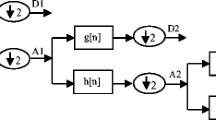Abstract
In this study, Elman’s recurrent neural networks using Resilient Back Propagation (RP) algorithm and feed-forward neural networks using adaptive learning rate algorithm (gdx) have been compared in order to determine the depth of anesthesia in the continuation stage of anesthesia and to estimate the amount of medicine to be applied at that moment. EEG data have been recorded by being sampled once in every 2 ms. From 30 patients, 57 distinct EEG recordings have been collected prior to during anaesthesia of different levels. The applied artificial neural network is composed of three layers, namely the input layer, the middle layer and the output layer. The nonlinear activation function sigmoid (sigmoid function) has been used in the hidden layer and the output layer. Prediction has been made by means of ANN. Training and testing the ANN have been used previous anaesthesia amount, total power/normal power and total power/previous. When Elman Resilient BP and feed-forward network are compared, it is observed that resilient back propagation algorithm has generated values which are quite close to the applied anesthesia amount compared to gdx which is an adaptive learning algorithm. The system has been able to correctly purposeful responses in average accuracy of 95% of the cases. This method is also computationally fast and acceptable real-time clinical performance has been obtained.







Similar content being viewed by others
References
Muthuswamy, J., and Roy, R. J., The use of fuzzy integrals and bispectral analysis of the electroencephalogram to predict movement under anesthesia. IEEE Trans. Biomed. Eng. 46(3):291–299, 1999.
Isaac, P. A., and Rosen, M., Lower oesophageal con-tractility and detection of awareness during an-aesthesia. Br. J. Anaesth. 65:319, 1990. doi:10.1093/bja/65.3.319.
Russell, I. F., Comparison of wakefulness with two anaesthetic regimens. Br. J. Anaesth. 58:965, 1986. doi:10.1093/bja/58.9.965.
Sleigh, J. W., Andrzejowski, J., Steyn-Ross, A., et al., The bispectral index: A measure of depth of sleep. Anesth. Analg. 88:659–661, 1999. doi:10.1097/00000539-199903000-00035.
Nahm, W., Stockmanns, G., Petersen, J., Gehring, H., Konecny, E., Kochs, H. D., and Kochs, E., Concept for an intelligent anaesthesia EEG monitor. Med. Inform. Internet Med. 24(1):1–9, 1999.
Witte, H., Doering, A., Galicki, M., Dörschel, J., Krajca, V., and Eiselt, M., Application of optimized pattern recognition units in EEG analysis: common optimization of preprocessing and weights of neural networks as well as structure optimization. Medinfo. 8(Part 1):833–837, 1995.
Huupponen, E., Himanen, S. L., Värri, A., Hasan, J., Saastamoinen, A., Lehtokangas, M., and Saarinen, J., Fuzzy detection of EEG alpha without amplitude thresholding. Artif. Intell. Med. 24(2):133–147, 2002.
Ibrahim, A. E., Taraday, J. K., and Kharasch, E. D., Bispectral index monitoring during sedation with sevoflurane, midazolam, and propofol. Anesthesiolog. 95:1151–1159, 2001.
Litscher, G., and Schwarz, G., Is there paradoxical arousal reaction in the EEG subdelta range in patients during anesthesia? J. Neurosurg. Anesthesiol. 11:49–52, 1999. doi:10.1097/00008506-199901000-00010.
Yardimci, A., Ferikoglu, A., Hadimioglu, N., Microcontroller Based Fuzzy Logic Sevofluorane anesthesia control system, B Reusch (Ed.): Fuzzy Days 2001 LNCS 2206, pp. 137–147, Berlin, 2001
Riedmiller, M., Braun, H., A Direct Adaptive Method for Faster backpropagation learning: The RPROP Algorithm, Proceedings of the IEEE Int. Conf. On Neural Networks, San Francisco, CA, March 28, 1993.
Brent, R. P., Fast Training Algorithms for Multi-layer Neural Nets. IEEE Trans. Neural Netw. 2:346–354, 1991. doi:10.1109/72.97911.
Hagan, M. T., Demuth, H. B., and Beale, M. H., Neural Network Design. PWS, Boston, 1996.
Reid, W. E., Power quality issues standards and guidelines. IEEE Trans. On Ind. App. 17(2):273–278, 2002.
Author information
Authors and Affiliations
Corresponding author
Rights and permissions
About this article
Cite this article
Güntürkün, R. Estimation of Medicine Amount Used Anesthesia by an Artificial Neural Network. J Med Syst 34, 941–946 (2010). https://doi.org/10.1007/s10916-009-9309-2
Received:
Accepted:
Published:
Issue Date:
DOI: https://doi.org/10.1007/s10916-009-9309-2




